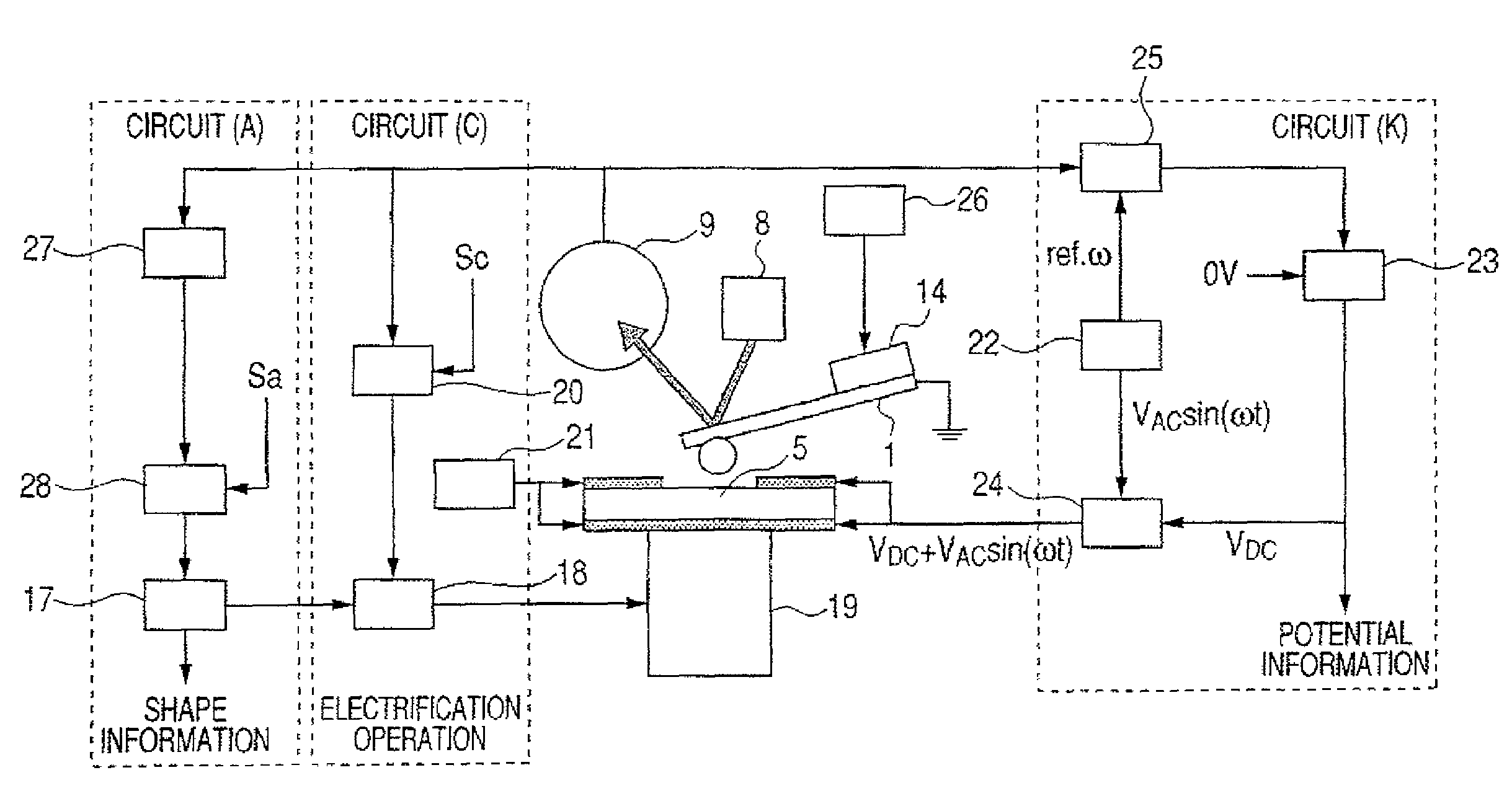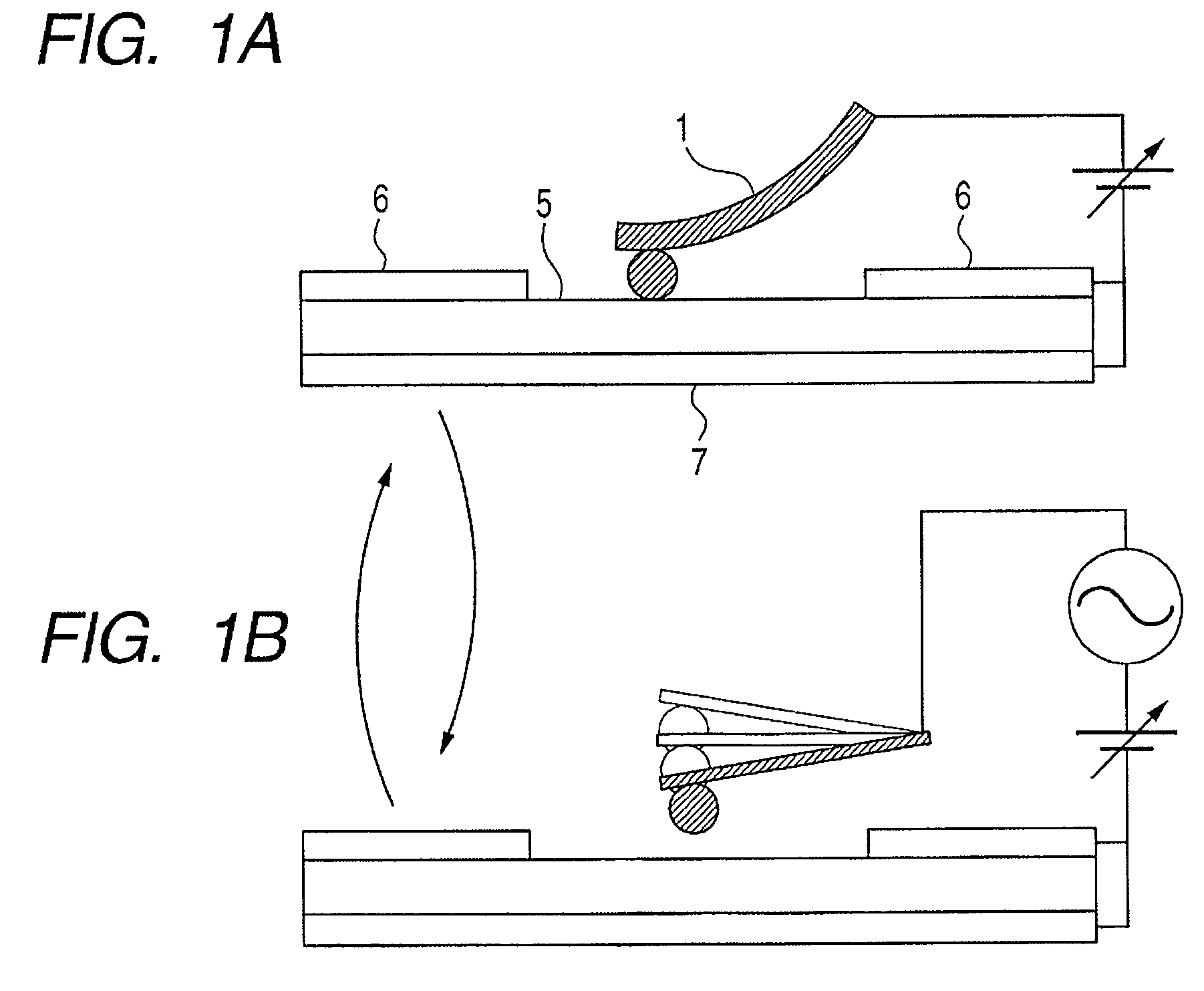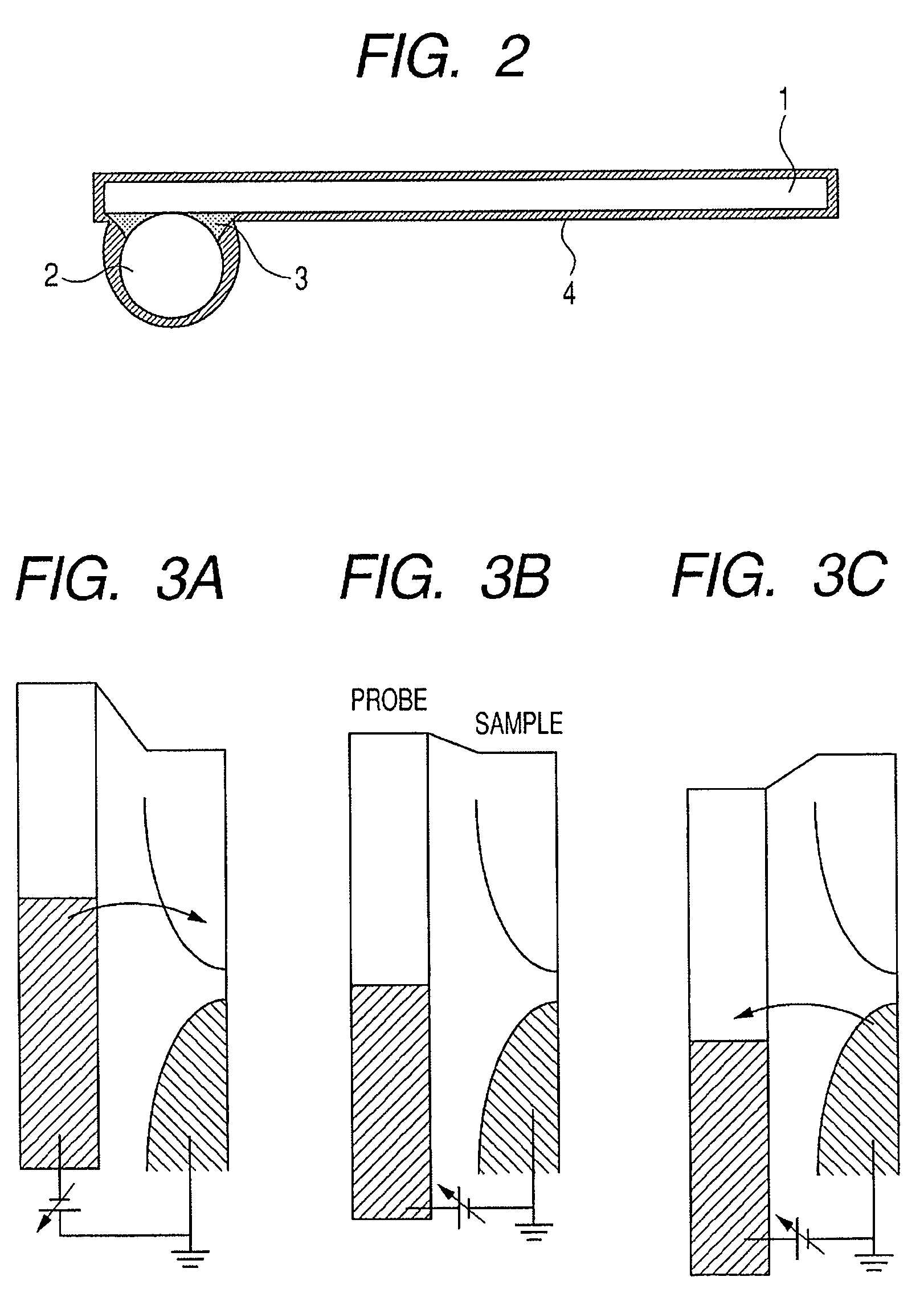Probe microscope and measuring method using probe microscope
a technology of probe microscope and probe microscope, which is applied in the direction of material analysis using wave/particle radiation, instruments, nuclear engineering, etc., can solve the problems of many methods which can be applied, complicated measurement, and small number of methods which are practically used or widely used, and achieve the effect of accurately measuring the electronic state density
- Summary
- Abstract
- Description
- Claims
- Application Information
AI Technical Summary
Benefits of technology
Problems solved by technology
Method used
Image
Examples
example 1
[0129]In Example 1, a measuring method using the Kelvin probe force microscope based on the frequency shift detecting method will be described.
[0130]In this example, a probe device used for the probe microscope was formed as follows.
[0131]A commercially available cantilever for atomic force microscope without a probe (produced by NanoWorld AG, product name: TL-FM, spring constant: 3 N / m, resonance frequency: 75 kHz) was used as the cantilever.
[0132]A PMMA particle which was used for a probe device and had a diameter of 10 μm was bonded and fixed to the cantilever by a small amount of epoxy (produced by Gatan Inc., product name: G-1 Epoxy).
[0133]After that, a coating film which was made of Au and had a thickness of 50 nm was formed on the particle and each surface of the cantilever by a sputtering method.
[0134]Therefore, the probe device having the structure as illustrated in FIG. 2 was produced.
[0135]FIG. 6 is a schematic structural diagram illustrating a control circuit of the prob...
example 2
[0160]In Example 2, a measuring method using the Kelvin probe force microscope based on the amplitude shift detecting method will be described.
[0161]In this example, a probe device used for the probe microscope was the probe device having the same structure as that used in Example 1 as illustrated in FIG. 2.
[0162]FIG. 7 is a schematic structural diagram illustrating a control circuit of the scanning probe microscope which is used in this example.
[0163]As illustrated in FIG. 7, the control circuit of a scanning probe microscope according to this example roughly includes four parts, that is, a circuit (C), a circuit (K), a circuit (A), and a normal control circuit other than the circuits.
[0164]The circuit (C) is used for electrification operation and includes a Z-piezoelectric driver 18, an error amplifier 20, and a DC power supply 21.
[0165]The circuit (K) is used for potential measurement and includes an oscillator 22, an error amplifier 23, an accumulator 24, and a lock-in amplifier...
example 3
[0186]In Example 3, a scanning probe microscope provided with the scanning function, which is configured to obtain an electronic state density distribution image, will be described.
[0187]The scanning probe microscope according to this example included the same control circuit as that in Example 1.
[0188]Therefore, when the in-plane scanning function of the scanning probe microscope is used, the measurement of the electronic state density as described in Example 1 can be sequentially performed while the position on the surface of the sample is changed. In view of the fact that each region of the surface of the sample is measured in this example, the measurement is based on the same idea as that in the current imaging tunneling spectroscopy (CITS) measurement in which I-V measurement is performed on each region of the surface of the sample.
[0189]However, according to the measuring method in this example, when the relationship between the applied voltage and the surface potential is to ...
PUM
 Login to View More
Login to View More Abstract
Description
Claims
Application Information
 Login to View More
Login to View More - R&D
- Intellectual Property
- Life Sciences
- Materials
- Tech Scout
- Unparalleled Data Quality
- Higher Quality Content
- 60% Fewer Hallucinations
Browse by: Latest US Patents, China's latest patents, Technical Efficacy Thesaurus, Application Domain, Technology Topic, Popular Technical Reports.
© 2025 PatSnap. All rights reserved.Legal|Privacy policy|Modern Slavery Act Transparency Statement|Sitemap|About US| Contact US: help@patsnap.com



